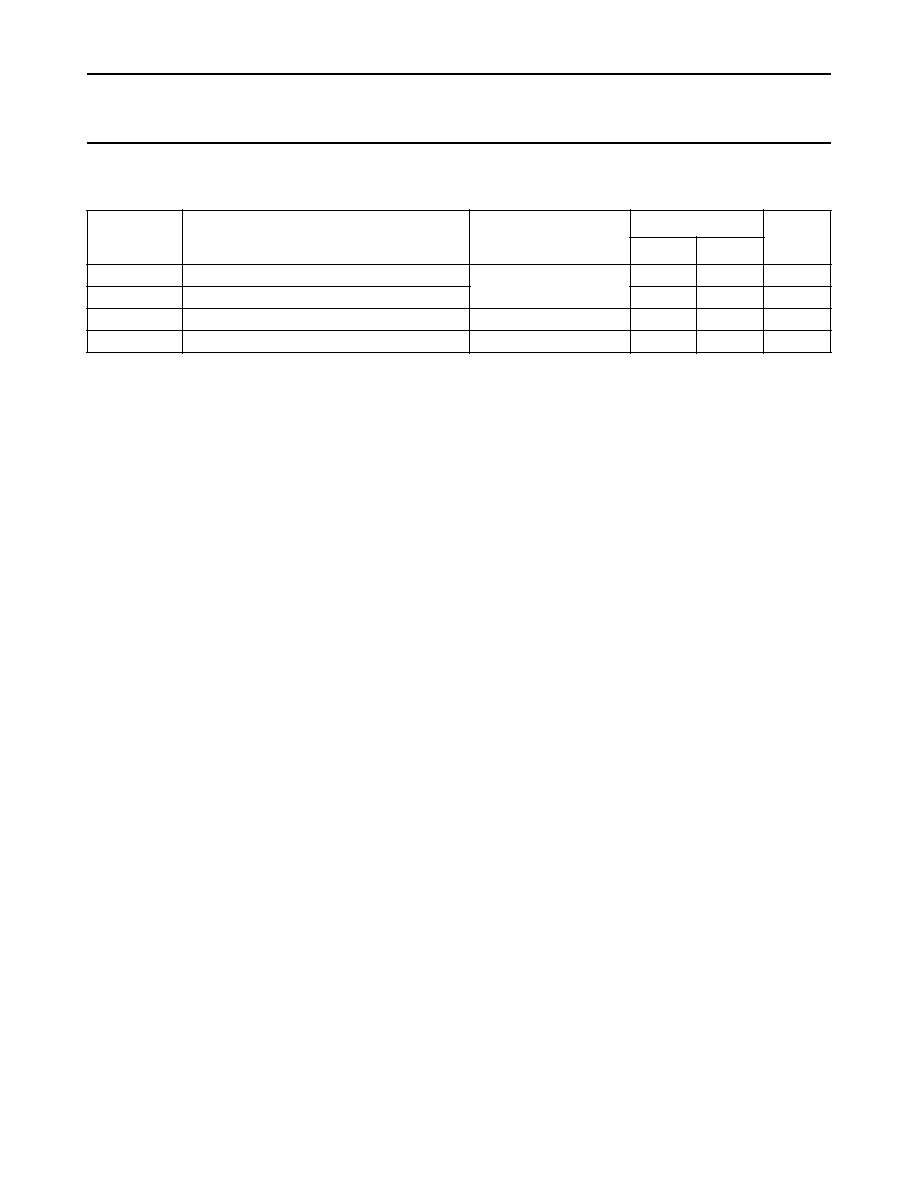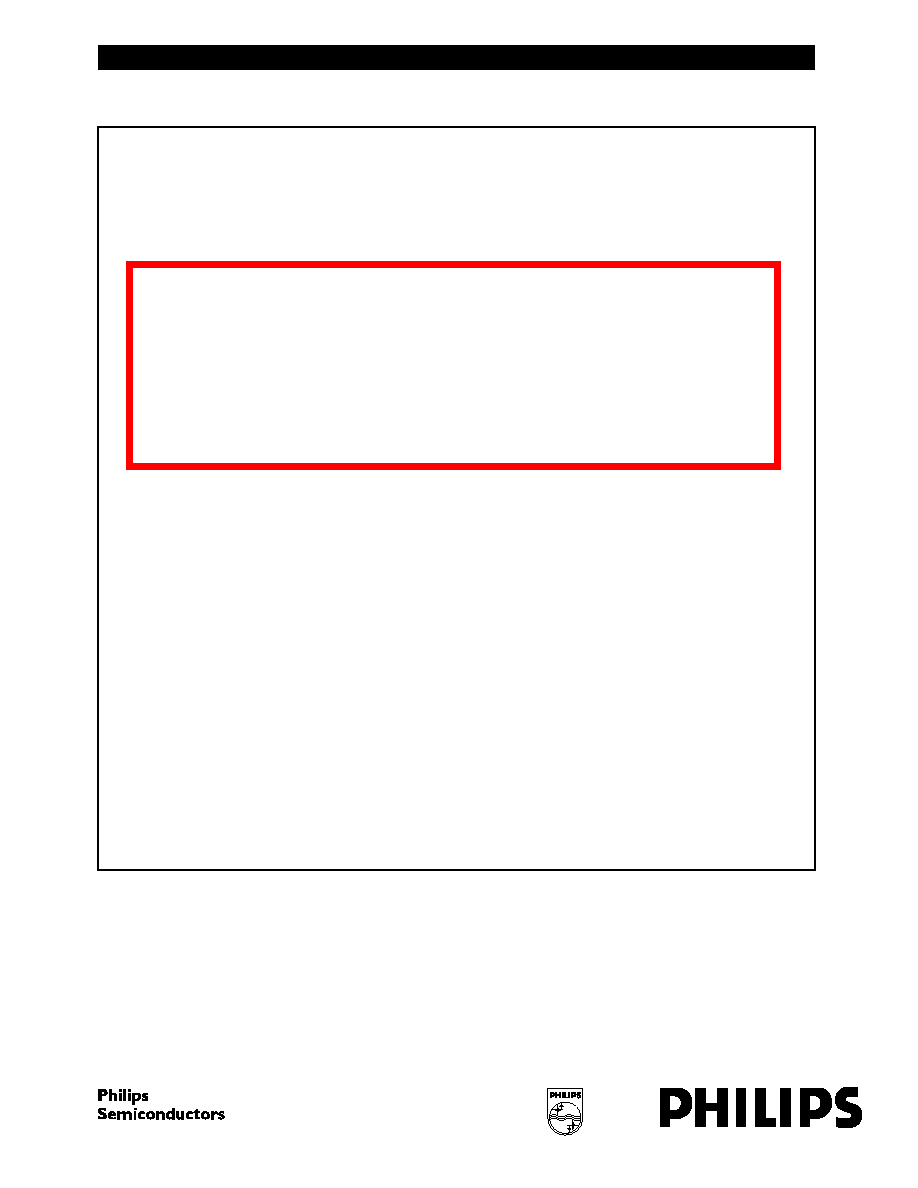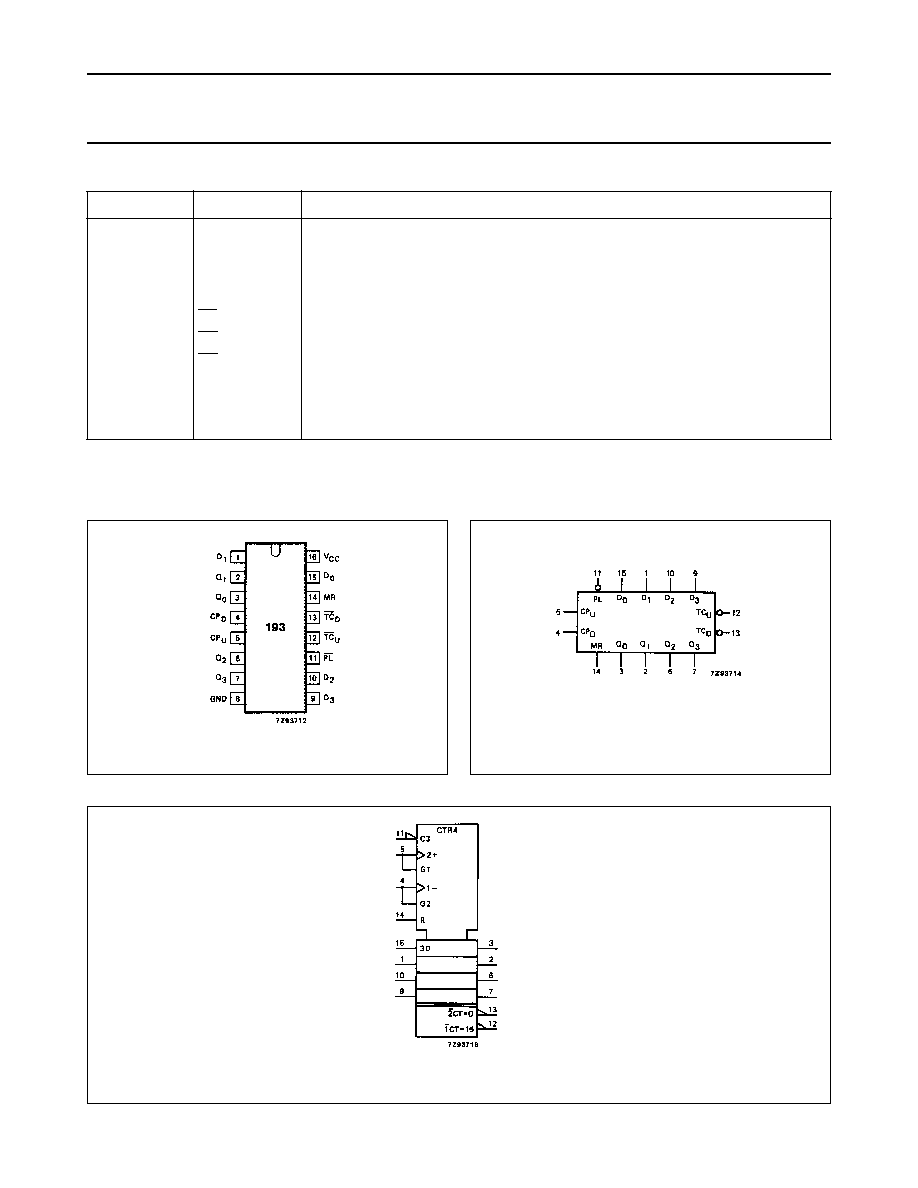
December 1990
2
Philips Semiconductors
Product specification
Presettable synchronous 4-bit binary
up/down counter
74HC/HCT193
FEATURES
∑
Synchronous reversible 4-bit binary counting
∑
Asynchronous parallel load
∑
Asynchronous reset
∑
Expandable without external logic
∑
Output capability: standard
∑
I
CC
category: MSI
GENERAL DESCRIPTION
The 74HC/HCT193 are high-speed Si-gate CMOS devices
and are pin compatible with low power Schottky TTL
(LSTTL). They are specified in compliance with JEDEC
standard no. 7A.
The 74HC/HCT193 are 4-bit synchronous binary up/down
counters. Separate up/down clocks, CP
U
and
CP
D
respectively, simplify operation. The outputs change
state synchronously with the LOW-to-HIGH transition of
either clock input. If the CP
U
clock is pulsed while CP
D
is
held HIGH, the device will count up. If the CP
D
clock is
pulsed while CP
U
is held HIGH, the device will count down.
Only one clock input can be held HIGH at any time, or
erroneous operation will result. The device can be cleared
at any time by the asynchronous master reset input (MR);
it may also be loaded in parallel by activating the
asynchronous parallel load input (PL).
The "193" contains four master-slave JK flip-flops with the
necessary steering logic to provide the asynchronous
reset, load, and synchronous count up and count down
functions.
Each flip-flop contains JK feedback from slave to master,
such that a LOW-to-HIGH transition on the CP
D
input will
decrease the count by one, while a similar transition on the
CP
U
input will advance the count by one.
One clock should be held HIGH while counting with the
other, otherwise the circuit will either count by two's or not
at all, depending on the state of the first flip-flop, which
cannot toggle as long as either clock input is LOW.
Applications requiring reversible operation must make the
reversing decision while the activating clock is HIGH to
avoid erroneous counts.
The terminal count up (TC
U
) and terminal count down
(TC
D
) outputs are normally HIGH. When the circuit has
reached the maximum count state of 15, the next
HIGH-to-LOW transition of CP
U
will cause TC
U
to go
LOW.
TC
U
will stay LOW until CP
U
goes HIGH again, duplicating
the count up clock.
Likewise, the TC
D
output will go LOW when the circuit is in
the zero state and the CP
D
goes LOW. The terminal count
outputs can be used as the clock input signals to the next
higher order circuit in a multistage counter, since they
duplicate the clock waveforms. Multistage counters will not
be fully synchronous, since there is a slight delay time
difference added for each stage that is added.
The counter may be preset by the asynchronous parallel
load capability of the circuit. Information present on the
parallel data inputs (D
0
to D
3
) is loaded into the counter
and appears on the outputs (Q
0
to Q
3
) regardless of the
conditions of the clock inputs when the parallel load
(PL) input is LOW. A HIGH level on the master reset (MR)
input will disable the parallel load gates, override both
clock inputs and set all outputs (Q
0
to Q
3
) LOW. If one of
the clock inputs is LOW during and after a reset or load
operation, the next LOW-to-HIGH transition of that clock
will be interpreted as a legitimate signal and will be
counted.

December 1990
3
Philips Semiconductors
Product specification
Presettable synchronous 4-bit binary
up/down counter
74HC/HCT193
QUICK REFERENCE DATA
GND = 0 V; T
amb
= 25
∞
C; t
r
= t
f
= 6 ns
Notes
1. C
PD
is used to determine the dynamic power dissipation (P
D
in
µ
W):
P
D
= C
PD
◊
V
CC
2
◊
f
i
+
(C
L
◊
V
CC
2
◊
f
o
) where:
f
i
= input frequency in MHz
f
o
= output frequency in MHz
(C
L
◊
V
CC
2
◊
f
o
) = sum of outputs
C
L
= output load capacitance in pF
V
CC
= supply voltage in V
2. For HC the condition is V
I
= GND to V
CC
For HCT the condition is V
I
= GND to V
CC
-
1.5 V
ORDERING INFORMATION
See
"74HC/HCT/HCU/HCMOS Logic Package Information"
.
SYMBOL
PARAMETER
CONDITIONS
TYPICAL
UNIT
HC
HCT
t
PHL
/ t
PLH
propagation delay CP
D
, CP
U
to Q
n
C
L
= 15 pF; V
CC
= 5 V
20
20
ns
f
max
maximum clock frequency
45
47
MHz
C
I
input capacitance
3.5
3.5
pF
C
PD
power dissipation capacitance per package
notes 1 and 2
24
26
pF




